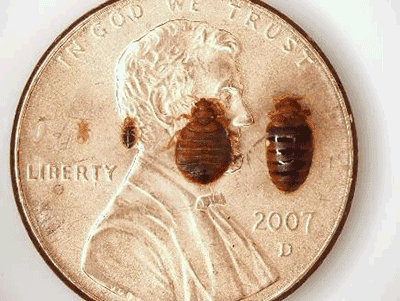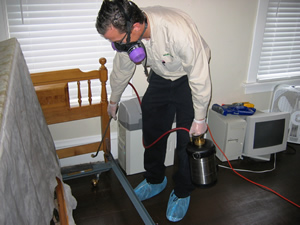Recognizing Various Treatment Alternatives for Bed Pest Control
In the world of insect management, bed bugs offer an unique challenge that calls for a strategic and well-thought-out method for reliable control. As we navigate through the subtleties of these therapy choices, the vital lies in picking the most ideal technique that aligns with both efficacy and sustainability in bed pest control.

Chemical Therapies
Chemical therapies are an usual approach made use of in the expert control of bed bugs. These therapies involve the application of pesticides to targeted locations where bed bugs are present.
When implementing chemical therapies for bed bug control, it is critical to comply with all security guidelines and guidelines to minimize dangers to human beings, animals, and the atmosphere. Professional insect control operators are educated to select the most appropriate pesticides, use them effectively, and take essential preventative measures to avoid overexposure. Additionally, appropriate monitoring and follow-up inspections are important to examine the efficacy of the treatment and ensure that all bed bugs have actually been removed. Chemical therapies can be a powerful tool in the extensive administration of bed pest infestations when used sensibly and along with various other control methods.
Heat Therapies

One of the primary benefits of heat treatments is that they do not include making use of chemicals, making them a preferred option for those worried regarding chemical exposure. In addition, warm therapies can be finished in a reasonably brief period, frequently in a solitary day, minimizing disruption to the owners of the treated space.
However, it is important to get the services of trained professionals when going with warmth treatments, as improper use warm can posture fire dangers and damages building. Overall, heat treatments represent a risk-free, effective, and eco pleasant strategy to combating bed bug infestations.
All-natural Remedies
When seeking option approaches for bed bug control, all-natural solutions supply a chemical-free strategy that can be efficient in combating invasions. These treatments are commonly liked by people aiming to stay clear of the use of extreme chemicals in their home - bed bug removal chicago. One popular natural treatment is diatomaceous earth, a fine powder that functions by drying out bed bugs and damaging their outer protective layer, inevitably leading to their death. Necessary oils such as peppermint, tea, and lavender tree oil are likewise recognized for their bed pest repellent residential or commercial properties. These oils can be thinned down and sprayed around bed frames, walls, and various other areas where bed pests might hide. In addition, heavy steam cleaning is a natural method that can help eliminate bed bugs and their eggs by revealing them to high temperatures. While all-natural treatments can be effective, it's important to keep in mind Go Here that they might call for repeated applications and thoroughness to accomplish effective bed insect control.
Integrated Pest Management
Thinking about the diverse techniques readily available for bed pest control, Integrated Bug Monitoring (IPM) sticks out as an extensive technique that combines various methods to successfully attend to insect invasions. IPM focuses on long-lasting avoidance and monitoring of pests via a mix of methods such as assessment, monitoring, and therapy.
One trick aspect of IPM is the emphasis on precise recognition of the parasite species and their particular behaviors. By understanding the biology and habits of bed insects, parasite control professionals can create targeted methods to get rid of problems. Furthermore, IPM promotes the usage of non-chemical control techniques, such as sealing fractures and crevices, vacuuming, heat therapies, and using cushion coverings.
In addition, IPM advocates for the wise application of chemicals as a last resource, prioritizing the use of low-toxicity products and incorporated approaches. Normal monitoring and follow-up inspections are necessary components of IPM to make certain the efficiency of the treatment and stop reinfestations. In General, Integrated Insect Monitoring supplies a lasting and alternative method to bed bug control, advertising environmentally responsible practices while effectively taking care of pest populations.
Professional Elimination Providers

Specialist pest control experts use a selection of strategies to fight bed pest infestations, including the application pest remediation of pesticides, warm treatments, vacuuming, and steam therapies. They are equipped with the essential devices and equipment to reach covert locations where bed insects might live, such as cracks, crevices, and wall gaps.
Moreover, specialist extermination solutions often include numerous brows through to make certain that all bed insects and their eggs are completely eliminated - best bed bug exterminator Chicago. This thorough technique aids protect against reinfestations and ensures lasting control of bed insects in the treated area
Additionally, pest control experts can offer useful advice on preparing the plagued location before treatment and deal suggestions for stopping future bed insect problems. In general, professional elimination solutions provide a extensive and efficient remedy for managing bed pest infestations.
Conclusion
In verdict, different therapy options for bed pest control consist of chemical therapies, warmth therapies, all-natural solutions, incorporated pest administration, and professional extermination solutions. Each alternative has its very own advantages and restrictions, so it is necessary to thoroughly consider the specific circumstances of the problem before these details picking a therapy technique. Efficient bed bug control requires a comprehensive technique that may include a mix of these treatment alternatives to efficiently remove the infestation.
Chemical treatments can be a powerful tool in the comprehensive management of bed bug infestations when utilized judiciously and in conjunction with other control methods.
Made use of in expert bed pest control, warm therapies offer a non-chemical option for eradicating bed pest invasions effectively. These oils can be weakened and splashed around bed frameworks, walls, and various other locations where bed pests may hide.In final thought, various treatment alternatives for bed insect control include chemical treatments, heat therapies, all-natural remedies, integrated pest management, and specialist extermination services. Reliable bed pest control calls for a thorough approach that might involve a mix of these therapy alternatives to efficiently eliminate the invasion.